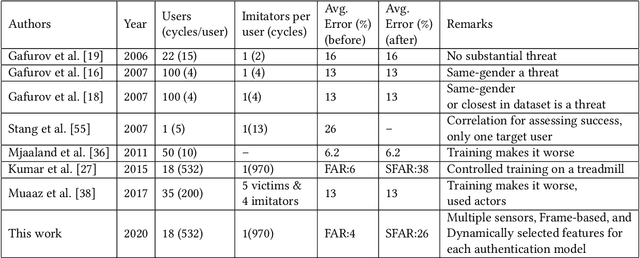Treadmill Assisted Gait Spoofing (TAGS): An Emerging Threat to wearable Sensor-based Gait Authentication
Paper and Code
Dec 17, 2020



In this work, we examine the impact of Treadmill Assisted Gait Spoofing (TAGS) on Wearable Sensor-based Gait Authentication (WSGait). We consider more realistic implementation and deployment scenarios than the previous study, which focused only on the accelerometer sensor and a fixed set of features. Specifically, we consider the situations in which the implementation of WSGait could be using one or more sensors embedded into modern smartphones. Besides, it could be using different sets of features or different classification algorithms, or both. Despite the use of a variety of sensors, feature sets (ranked by mutual information), and six different classification algorithms, TAGS was able to increase the average False Accept Rate (FAR) from 4% to 26%. Such a considerable increase in the average FAR, especially under the stringent implementation and deployment scenarios considered in this study, calls for a further investigation into the design of evaluations of WSGait before its deployment for public use.
 Add to Chrome
Add to Chrome Add to Firefox
Add to Firefox Add to Edge
Add to Edge